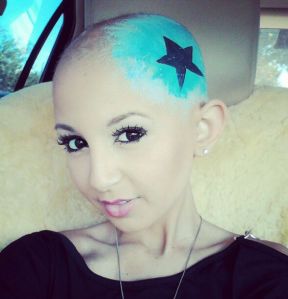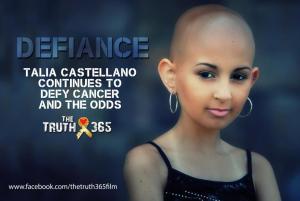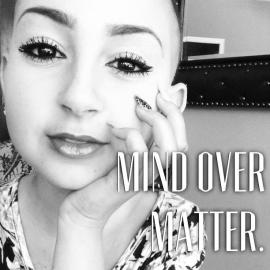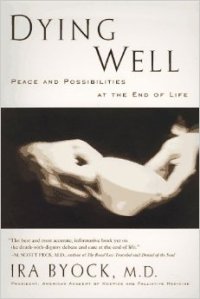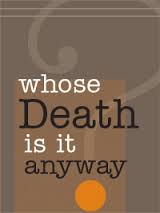Living with a life-threatening illness was the class discussion from this semester that resonated most with me. I found Talia’s story to be compelling and indicative of successful coping in the face of a life-threatening illness.
Talia Joy Castellano was diagnosed with neuroblastoma at age 7. She became an internet sensation at 12 years old with well over 1 million subscribers to her YouTube channel. She was a self-taught and accomplished make-up artist who posted how-to videos to help herself feel beautiful after losing her hair due to cancer treatments. Her bubbly personality and unique way of coping with her illness inspired countless people all over the world. Talia shared her story on The Ellen Show and she was made an honorary Cover Girl. Talia became a voice for children with cancer and an example for everyone of how to live life to the fullest.
Talia developed a second cancer, leukemia, in August 2012. At almost 13 years old, Talia was well aware of her condition and prognosis. She made the decision to forgo a bone marrow transplant and chose to live what time she had left to the fullest. That seems like an amazing decision for someone so young, yet Talia was wise beyond her years. It seems easier to accept that an older person would chose quality over quantity of life, yet when a young person does this, it can be perceived as a tragedy. Many of Talia’s fans didn’t seem to understand or accept her decision.
“Basically there aren’t a lot options for treatment anymore. The docs gave me to option of doing treatment or don’t do the treatment and just live life for the time remaining. Having cancer has been an amazing yet horrible journey, yet every journey has an end.”
Below is her video explaining about her latest diagnosis and why she felt a bone marrow transplant was not the right treatment for her.
“I’m going to decide on whether or not I want to do the bone marrow transplant, or whether or not I just don’t do it and the live the time I have remaining,” said Talia. ”This isn’t fair to me anymore, I’m only 13. I shouldn’t have to be doing this.”
Talia went through so much in her short life and yet she chose how she wanted to live the last 11 months of her life. Sadly, Talia lost her life in July 2013, but clearly her message will not be forgotten. Follow Talia’s story at her website. http://angelsfortalia.com/
